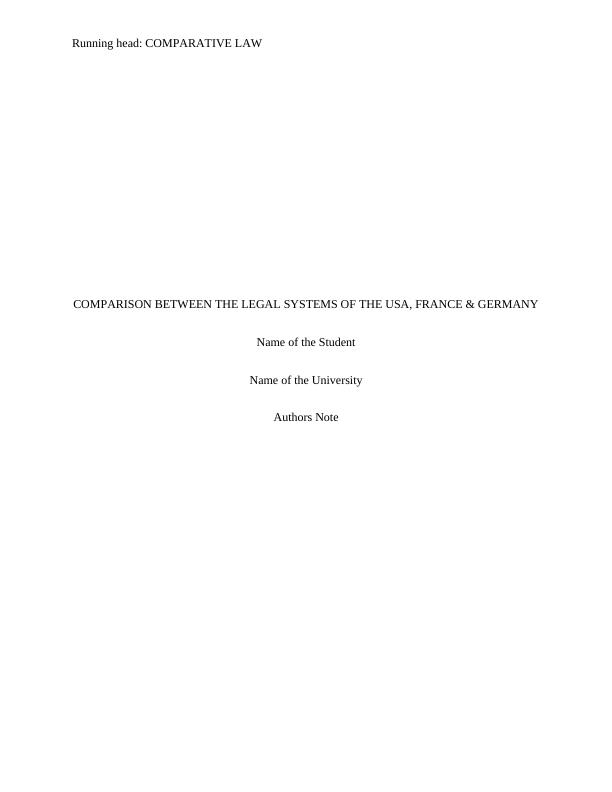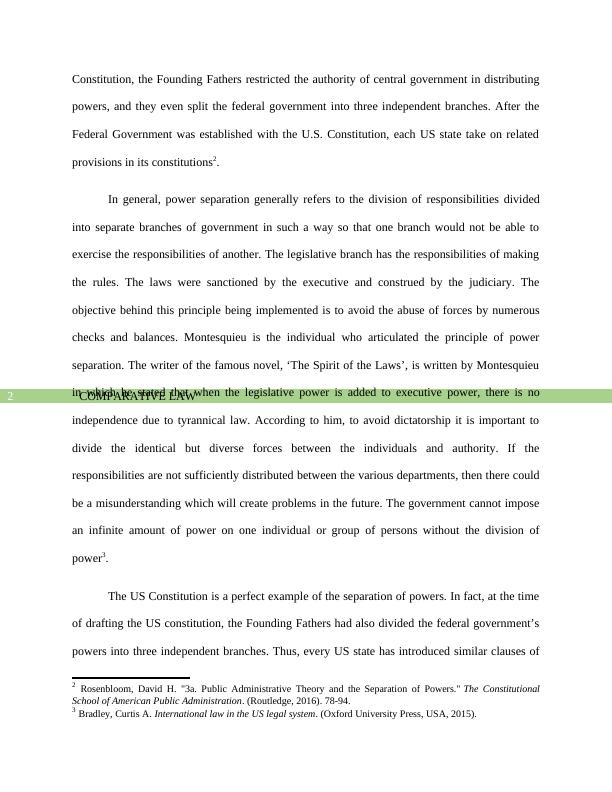Comparison Between Legal System of USA, France & Germany
Answer one of the following questions: 1/ Discuss whether national legal systems have more in common with legal systems from other legal families than from their own, in relation to the French, German and American legal systems. 2/ Compare and contrast the extent to which international law has complicated the hierarchy of written norms in French, German and American law. 3/ Discuss and compare the legal systems of the USA, France and Germany with reference to the antiquated concept of separation of powers. 4/ Analyze the position of the legislature in the light of the statement that its role has been further reduced since the beginning of the fifth Republic.
Added on 2022-08-31
Comparison Between Legal System of USA, France & Germany
Answer one of the following questions: 1/ Discuss whether national legal systems have more in common with legal systems from other legal families than from their own, in relation to the French, German and American legal systems. 2/ Compare and contrast the extent to which international law has complicated the hierarchy of written norms in French, German and American law. 3/ Discuss and compare the legal systems of the USA, France and Germany with reference to the antiquated concept of separation of powers. 4/ Analyze the position of the legislature in the light of the statement that its role has been further reduced since the beginning of the fifth Republic.
Added on 2022-08-31
End of preview
Want to access all the pages? Upload your documents or become a member.



